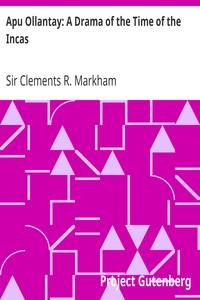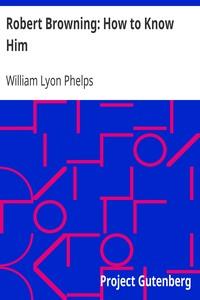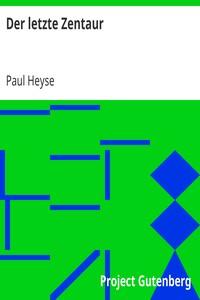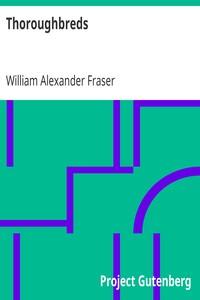Read this ebook for free! No credit card needed, absolutely nothing to pay.
Words: 20741 in 21 pages
This is an ebook sharing website. You can read the uploaded ebooks for free here. No credit cards needed, nothing to pay. If you want to own a digital copy of the ebook, or want to read offline with your favorite ebook-reader, then you can choose to buy and download the ebook.


: Apu Ollantay: A Drama of the Time of the Incas by Markham Clements R Clements Robert Sir - Ollantay (Play); Incas Drama
Editor: Clements R. Markham
Translator: Clements R. Markham
APU OLLANTAY
A Drama Of The Time Of The Incas
Sovereigns Of Peru
About A.D. 1470
INTRODUCTION
The drama was cultivated by the Incas, and dramatic performances were enacted before them. Garcilasso de la Vega, Molina, and Salcamayhua are the authorities who received and have recorded the information given by the Amautas respecting the Inca drama. Some of these dramas, and portions of others, were preserved in the memories of members of Inca and Amauta families. The Spanish priests, especially the Jesuits of Juli, soon discovered the dramatic aptitude of the people. Plays were composed and acted, under priestly auspices, which contained songs and other fragments of the ancient Inca drama. These plays were called 'Autos Sacramentales.'
But complete Inca dramas were also preserved in the memories of members of the Amauta caste and, until the rebellion of 1781, they were acted. The drama of Ollantay was first reduced to writing and arranged for acting by Dr. Don Antonio Valdez, the Cura of Tinto. It was acted before his friend Jose Gabriel Condorcanqui in about 1775. Taking the name of his maternal ancestor, the Inca Tupac Amaru, the ill-fated Condorcanqui rose in rebellion, was defeated, taken, and put to death under torture, in the great square of Cuzco. In the monstrous sentence 'the representation of dramas as well as all other festivals which the Indians celebrate in memory of their Incas' was prohibited. This is a clear proof that before 1781 these Quichua dramas were acted.
The original manuscript of Valdez was copied by his friend Don Justo Pastor Justiniani, and this copy was inherited by his son. There was another copy in the convent of San Domingo at Cuzco, but it is corrupt, and there are several omissions and mistakes of a copyist. Dr. Valdez died, at a very advanced age, in 1816. In 1853 the original manuscript was in the possession of his nephew and heir, Don Narciso Cuentas of Tinta.
The Justiniani copy was, in 1853, in the possession of Dr. Don Pablo Justiniani, Cura of Laris, and son of Don Justo Pastor Justiniani. He is a descendant of the Incas. In April 1853 I went to Laris, a secluded valley of the Andes, and made a careful copy of the drama of Ollantay. From this Justiniani text my first very faulty line-for-line translation was made in 1871, as well as the present free translation.
The first printed notice of Ollantay appeared in the Museo Erudito, Nos. 5 to 9, published at Cuzco in 1837, and edited by Don Jose Palacios. The next account of the drama, with extracts, was in the 'Antiguedades Peruanas,' a work published in 1851 jointly by Dr. von Tschudi and Don Mariaiao Rivero of Arequipa. The complete text, from the copy in the convent of San Domingo at Cuzco, was first published at Vienna in 1853 by Dr. von Tschudi in his 'Die Kechua Sprache. It was obtained for him by Dr. Ruggendas of Munich. The manuscript was a corrupt version, and in very bad condition, in parts illegible from damp. In 1868 Don Jose Barranca published a Spanish translation, from the Dominican text of von Tschudi. The learned Swiss naturalist, von Tschudi, published a revised edition of his translation at Vienna in 1875, with a parallel German translation. In 1871 I printed the Justiniani text with a literal, line-for-line translation, but with many mistakes, since corrected; and in 1874, a Peruvian, Don Jose Fernandez Nodal, published the Quichua text with a Spanish translation.
Free books android app tbrJar TBR JAR Read Free books online gutenberg
More posts by @FreeBooks









